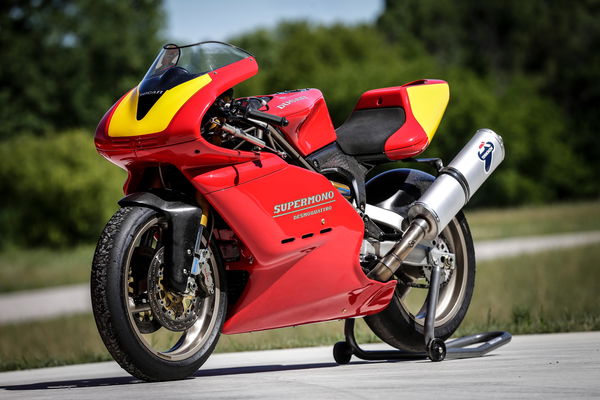What The Original Ducati 916 Launch Was Like
30 years on, a road tester present at the original 916 press launch remembers...
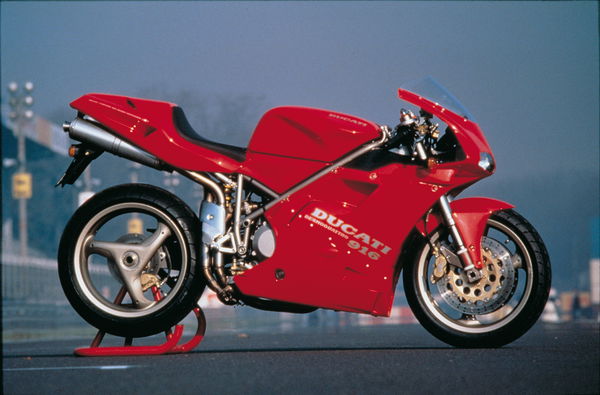
It’s 30 years since the launch of the launch of what’s been repeatedly voted as one of the most significant motorcycles of all time – Ducati’s iconic 916.
The 916 was the bike that well and truly put Ducati back on the map. Its striking, radical, angular styling made it the Italian poster bike for a generation and sparked a fashion for under seat exhausts. Meanwhile, it experienced instant track success, winning World Superbikes the first time out then four of the next five series, making a hero of Brit Carl Fogarty. It shook up the superbike world order, and its commercial success laid the foundations for the world leading (and now Audi-owned) brand Ducati is today.
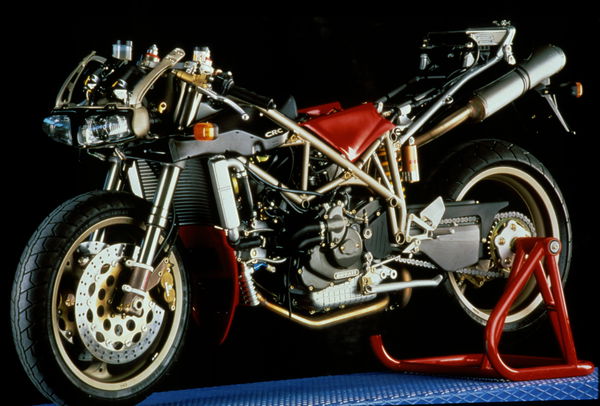
Simply, without the 916, modern Ducati, the most desirable bike brand of all - the bike sport king currently dominating WSB and MotoGP (and soon, maybe even MX), the tech pioneer that brought in riding modes, TFT screens and semi-active suspension and the blue-chip commercial entity known for its lavish, exotic bikes launches and ‘WDW’ festivals probably wouldn’t exist.
Which is why it may be a surprise that the press launch of the 916, wasn’t particularly desirable, certainly wasn’t lavish and almost didn’t happen at all.
Back in 1993 Ducati and I were in very different places. Ducati was making decent strides under Cagiva ownership and its 851-then-888, powered by Massimo Bordi’s liquid-cooled, four-valve Desmoquattro V-twin, had brought the marque into the modern age. But it was also still small fry; its bikes considered fragile exotica for an enthusiastic few, its UK importer was little more than a small dealership on the outskirts of Northampton and its then range – a couple of Supersports, the 907IE, new Monster and 888 – was barely four models strong.
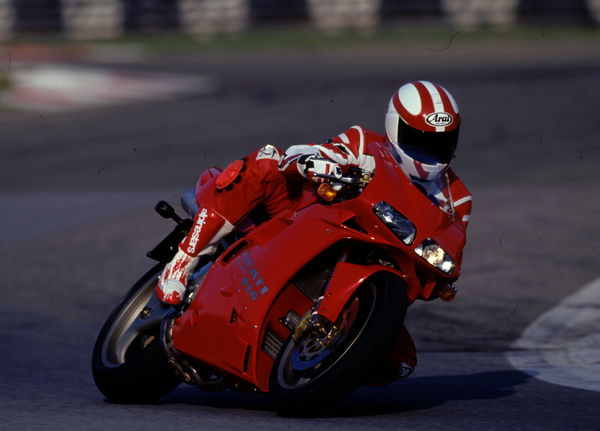
Ducati didn’t really do press launches back then, either. There had been something for the bold but flawed Paso 750 at the end of 1986 and again for the first 851 a year later, but the contrast to today’s myriad million-dollar jamborees where dozens of journalists are jetted in from around the world multiple times a year to places like Morocco, Dubai and Monte Carlo, is immense.
I, meanwhile, was a still slightly green tester on Bike magazine, was aware of the new 916 as unveiled at the Milan Show that November and was expecting an ‘improved 888’ but not at all what it would turn out to be.
This is why, when the invitation to its launch arrived just after Christmas but with no offer of the usual complimentary flights, we almost considered buying the story from a freelancer instead…
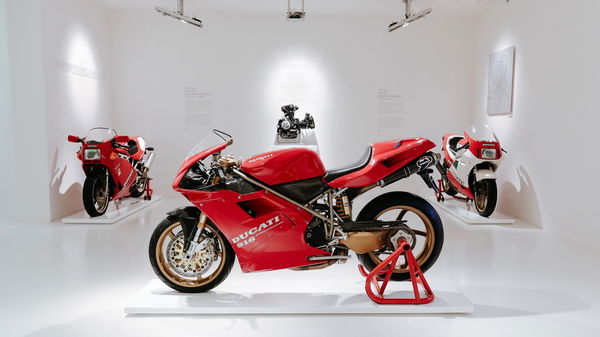
Fortunately, we changed our minds. Instead of stumping up for expensive flights (no Ryanair in those days) from a Wednesday to Friday evening (the launch was Thursday-Friday 27-28 January, 1994), I found cheaper ones from Wednesday to Sunday and decided to make a weekend of it.
Flying out alone, unchaperoned by a PR person (again, usually unheard of these days) I sorted a hire car and arrived at the allocated hotel in an out-of-season Rimini. Inside - again in contrast to modern launches where branding, bikes and PR people are everywhere - there was no fanfare, no fuss and the only indicator of an event was an engraved aluminium paperweight in a gift box on my bed.
That all started to change the following morning. Along with the rest of the UK contingent, Kevin Ash from MCN and freelancer Roland Brown (yes, just three British ‘journos’ were on the 916 launch - compare that to the dozens of hacks, videographers and YouTubers invited today), I was mini-bussed to nearby Misano and although outside it was silent and shrouded in winter’s dregs, in the pitlane something was most definitely happening.
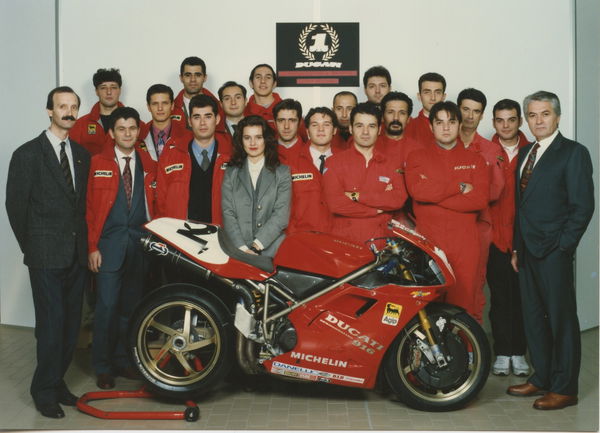
A line of around 15 seemingly identical red 916s (they weren’t, as pre-production prototypes nearly all had slight differences) was arranged immaculately in the awakening sun while a team of mechanics and helpers buzzed around. I was aware of God-like designer Massimo Tamburini (pictured above with Ducati employees), a Ducati paddock jacket incongruously over his crisp suit, cigarette in hand, lurking in the background, and the world was about to change…
By the time I was halfway down pitlane, I knew the 916 was very different. Slim, sharp and small it made the 888 feel like a bloated bus. Yet with new switchgear, clocks and a sense of Japanese quality, it was truly modern, too. By the second corner (this was ‘old’, anticlockwise Misano characterised by a fast right out of pitlane before a slow left then ever-accelerating kinks onto the back straight), I was convinced it was out of this world.
I remember few specifics about the next 20 laps or so save the 916 was not only fast, but it was also a joy: its booming V-twin delivering both effortless drive and a seemingly endless top speed; it being both stable yet with immediate, precise steering and it overall making me feel like some racing god, which, clearly, I wasn’t.
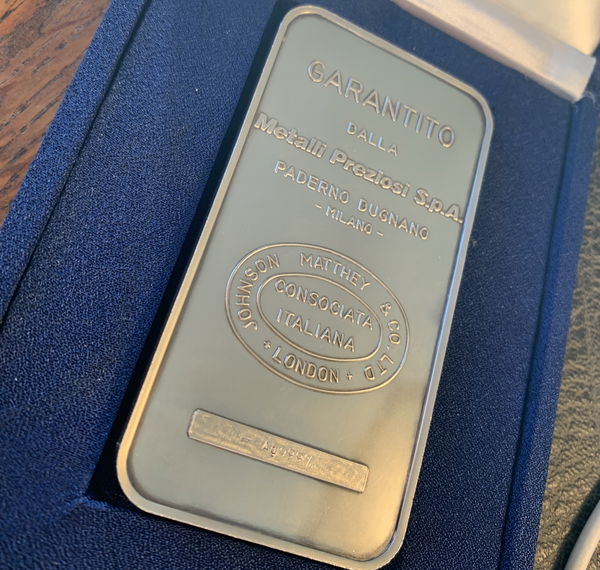
‘Ashy’ and I compared notes afterwards. "This thing is a game-changer," we agreed. That afternoon we toured Tamburini’s Cagiva Research Centre (CRC) as recently founded in nearby San Marino and I interviewed the great man himself. That evening I exuberantly wrote: "The 916 is THE bike of the year… Carl Fogarty WILL win the World Superbike title," and was proved right on both grounds. The next day, after snagging a quick ride on Cagiva’s new Elefant, I drove to Venice and had a very pleasant few hours in a near-deserted St Marks Square sipping expensive cappuccinos and reading a book.
I didn’t get it all right, though. On the drive back to Milan airport I picked up a speeding ticket, back at Bike we still didn’t think the 916 was big enough to put on the cover, and that ‘aluminium paperweight’ turned out to be a solid 500g ingot of silver. I still have it today.
